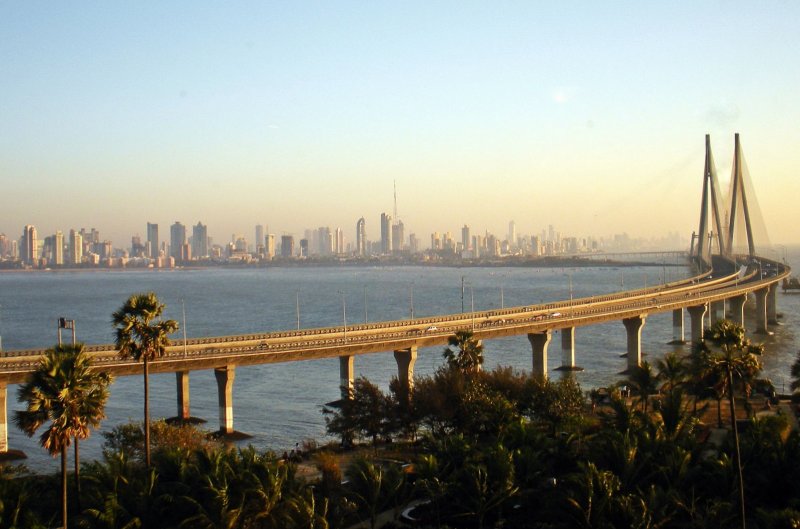 Mumbai skyline with the Bandra-Worli Sea Link
Mumbai skyline with the Bandra-Worli Sea LinkSource: https://commons.wikimedia.org/wiki/File:Worli_skyline_with_BSWL.jpg
Author: Woodysworldtv

Author: Woodysworldtv

Mumbai (मुंबई) is the largest city in India. It covers 603.4 sq km (233 sq mi) and has a population of 12.5 million within the city limits, and 22 million within its metropolitan area.
Mumbai was formerly known as Bombay. It is the capital of Maharashtra state. The city occupies the island of Salsette - to be precise, the city was originally built on a group of 7 islands that formed the island city of Bombay, which covers 67.79 sq km (26 sq mi). It was then joined to the island of Salsette to form Greater Bombay.
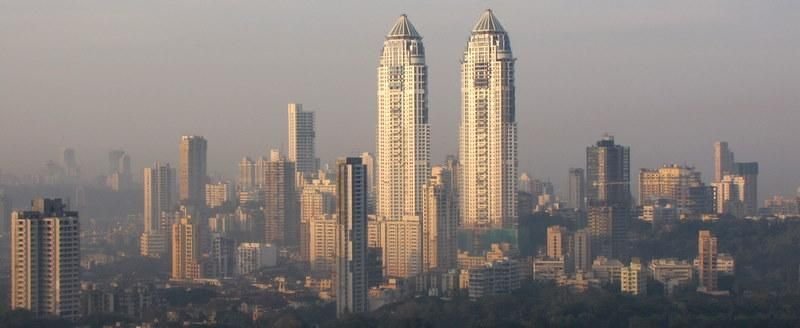 Mumbai skyline
Mumbai skylineSource: https://commons.wikimedia.org/wiki/File:Mumbai.jpg
Author: myidistaken

Author: myidistaken

Places of Interest in Mumbai
- Ballard Estate
- Bandra
- Bandra-Worli Sea Link
- Banganga Temple
- Colaba Causeway
- Crawford Market
- Elephanta Island
- Film City
- Flora Fountain
- Gateway of India
- General Post Office
- Haji Ali Mosque
- Horniman Circle
- Juhu Beach
- Kala Ghoda
- Khotachiwadi
- Mahalaxmi Temple
- Malabar Hill
- Marine Drive
- Mumbai Stock Exchange
- Prince of Wales Museum
- Sanjay Gandhi National Park
- Shahid Bhagat Singh Marg
- Town Hall
- Victoria Terminus
- Wellington Fountain
Location of Mumbai on map
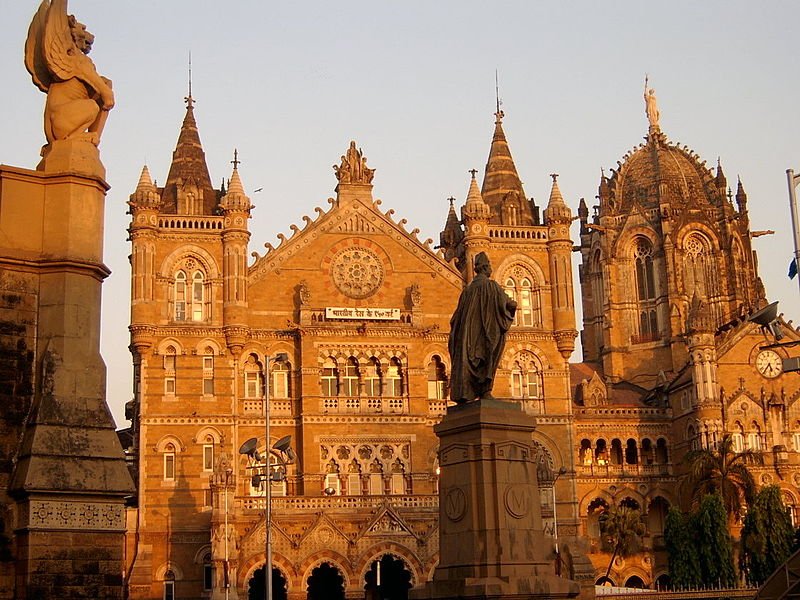 Chhatrapati Shivaji Terminus, Mumbai
Chhatrapati Shivaji Terminus, MumbaiSource: https://commons.wikimedia.org/wiki/File:SV400638.jpg
Author: Rahul Megharaj

Author: Rahul Megharaj

Due to it being created from land reclamation of islands, much of Mumbai is low lying, with average height of between 10 m (33 ft) to 15 m (49 ft) above sea level. The highest point in Mumbai are the hills at Salsette, at 450 m (1,476 ft) above sea level.
Mumbai experiences a tropical wet and dry climate. The wettest months are June through September, during the southwest monsoon. The annual average rainfall is about 2,147 mm (84.5 in). Average temperature in Mumbai is around 27.2°C (81°F).
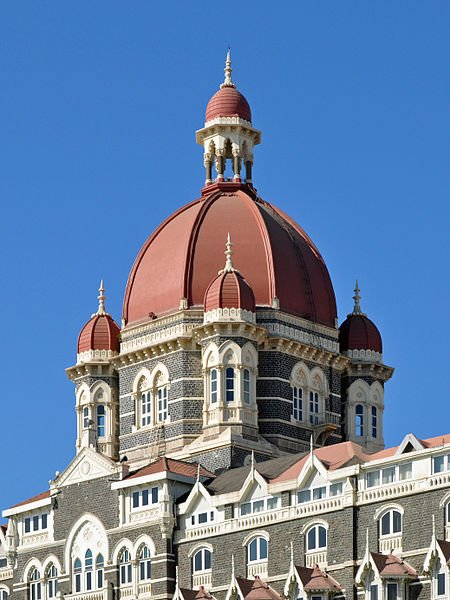 The main dome of the Taj Mahal Hotel in Mumbai
The main dome of the Taj Mahal Hotel in MumbaiSource: https://commons.wikimedia.org/wiki/File:Main_Dome_of_Taj_Mahal_Palace_Hotel.jpg
Author: Joe Ravi

Author: Joe Ravi

Mumbai is the commercial capital of India. The whole over knows it as Bollywood, the centre for Hindi film production. It is a fast moving, cosmopolitan city quite unlike the rest of India. The Reserve Bank of India, the Bombay Stock Exchange, the National Stock Exchange of India as well as the headquaters of numerous Indian companies such as Tata Indicom and Crompton Graeves are all located here.
History of Mumbai
In comparison to Delhi and other major Indian cities, Mumbai is relatively young. Although there is documented evidence of human habitation in the Mumbai area going back to 250BC, the actual Mumbai was sea that was only formed through land reclamation. Mumbai came to being when the Portuguese appropriated the original islands from the Bahadur Shah of Gujarat in 1534. They were then ceded to Charles II of England in 1661 as dowry for Catherine of Braganza, daughter of the Duke of Braganza, the future King John IV of Portugal.
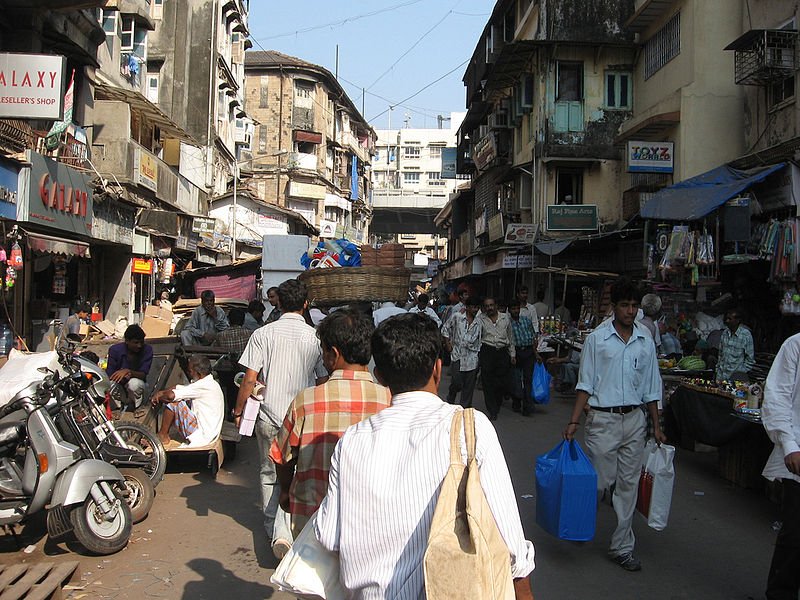 Nagdevi Street, Mumbai
Nagdevi Street, MumbaiSource: https://commons.wikimedia.org/wiki/File:Nagdevi.jpg
Author: Bruce Tan

Author: Bruce Tan

Planning your trip to Mumbai
Chhatrapati Shivaji International Airport, named after Chhatrapati Shivaji Raje Bhonsle, the founder of the Maratha empire in 1674, is the gateway to Mumbai. The airport has two terminals: Terminal 1, called Santacruz terminal, for domestic flights, and Terminal 2, Andheri terminal, for international flights. A free shuttle bus service connects the two terminals.Chhatrapati Shivaji Airport is located 28 km from downtown Mumbai. Getting to town is by prepaid coupon taxi: go to the taxi counter, buy the coupon, and give it to the taxi driver. The coupon has the taxi registration number on it, so you shouldn't take any taxi. The charges includes any tolls to be paid.
In addition to the domestic flights at Chhatrapati Shivaji Airport, you may also take the train from Mumbai to most destinations in India. To purchase Indian Railway tickets online, go to the Indian Railway Online Passenger Reservation Site (https://www.indianrail.gov.in/).
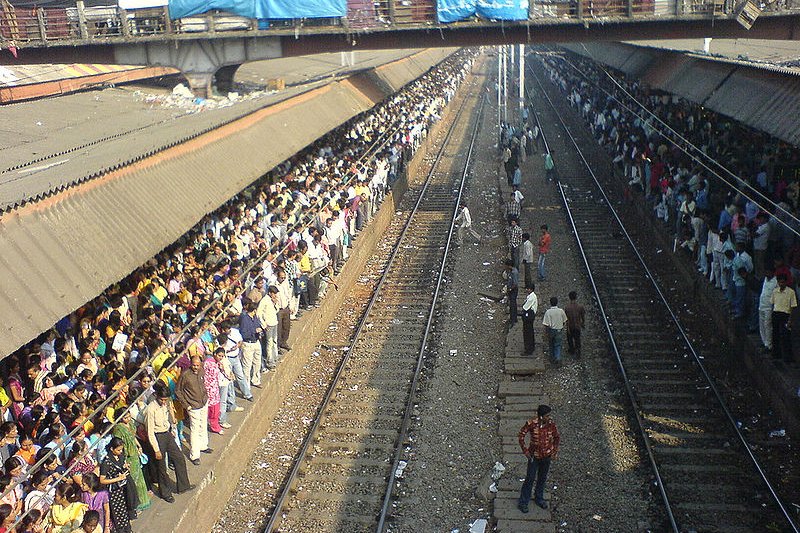 Borivali Train Station, Mumbai
Borivali Train Station, MumbaiSource: https://commons.wikimedia.org/wiki/File:Borivali_station_peak_hours.jpg
Author: Rakesh Krishna Kumar

Author: Rakesh Krishna Kumar

Exploring Mumbai
The easiest way to get around in Mumbai is by taxi. There are two types, the air-conditioned, blue/silver taxis called Cool Cabs, and the standard non-airconditioned yellow-and-black taxi. Minimum fare is Rs13. You can either rely on the meter (which is matched against a tariff card) or prepay for the journey. Cool Cabs 40% higher than the ordinary taxis, but may be worth the comfort.To call a taxi, contact:
City Cool Cabs: +91 22 2216 4466, +91 22 2218 9620, +91 22 5688 4466
Cool Cab: +91 22 2490 5151, +91 22 2490 5152.
 Latest updates on Penang Travel Tips
Latest updates on Penang Travel Tips
 Map of Roads in Penang
Map of Roads in Penang
Looking for information on Penang? Use this Map of Roads in Penang to zoom in on information about Penang, brought to you road by road.
Copyright © 2003-2025 Timothy Tye. All Rights Reserved.

 Go Back
Go Back